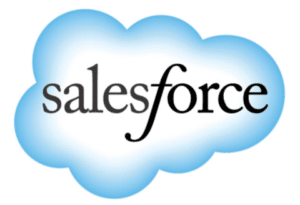5 Steps To Defining Opportunity Stages in Salesforce
 Salesforce is a powerful tool with an incredible number of customization options. But where to start?
Salesforce is a powerful tool with an incredible number of customization options. But where to start?
Customize your Salesforce Opportunity Stages first to set yourself up for success. Your sales team will use Opportunity Stages on a daily basis for tracking and for reporting and the Salesforce default Opportunity Stages are unlikely to correspond to the stages of your unique selling process.
When you clearly define each opportunity stage, sales reps can prioritize their workflow and sales managers will have better visibility of their pipeline.
5 Steps to Define Opportunity Stages
n
1. Start with the Salesforce Defaults. There’s nothing worse than starting a Salesforce admin meeting with a blank slate. Prepare yourself by setting up the Default Opportunity Stages built into Salesforce and work with your team to define and adjust them based on your unique selling process.
2. Include the right stakeholders. You’ll require knowledge and buy-in from several groups at your company to make changes. Sales leaders, reps, and managers all have specific needs that need to be met before they consider an opportunity to have advanced to the next stage. Consult with key players before you define opportunity stages to align everyone’s needs and reach consensus. If you’re having trouble getting the whole team on board, the next best option is to agree to test your stages for 2 weeks and reconvene to re-evaluate after testing.
3. Include a structured Stage Description. It’s important that your Opportunity Stages are descriptive and detailed enough to eliminate ambiguity around where a given opportunity should land. For each Opportunity Stage, list:
- What is the buyer’s goal at this stage?Ex: Learn, build a list of possible vendors, compare vendors, get through contract revisions, consult with their team.
- What needs to happen for the opportunity to convert to the next stageEx: Request a demo, on-site meeting, request a proposal, attend a meeting, sign an LOI, issue an RFP.
- What percentage of deals at this stage ultimately close?This will be your Close %.
4. Choose Buyer-Friendly Names for Your Stages. So that you can speak openly with your customers about where you’re at in the buying cycle, choose buyer-friendly Opportunity Stage names. For example, use ‘Terms’ vs. ‘Negotiation’, ‘Evaluating Fit’ vs. ‘Selling’. Don’t get too crazy. If you do, chances are you’ll forget the name of the stage, which won’t help in the sales process.
5. Try your stages on for fit. Before you solidify your opportunity stages, consider where your existing deals and opportunities fit in. If your existing opportunities clearly fall into the new stages, you’re on track. If it’s hard to determine where an opportunity fits or it could fit into two different stages, you’ll need to clarify the descriptions.
At the end of the day, defining opportunity stages in Salesforce makes it faster and easier for your sales reps and management to understand each opportunity and sets you up to scale your sales system. Following these tips ensures your reps will prioritize their tasks, communicate to management, and hit their quota.
8 Simple Tips To Make Salesforce Easier